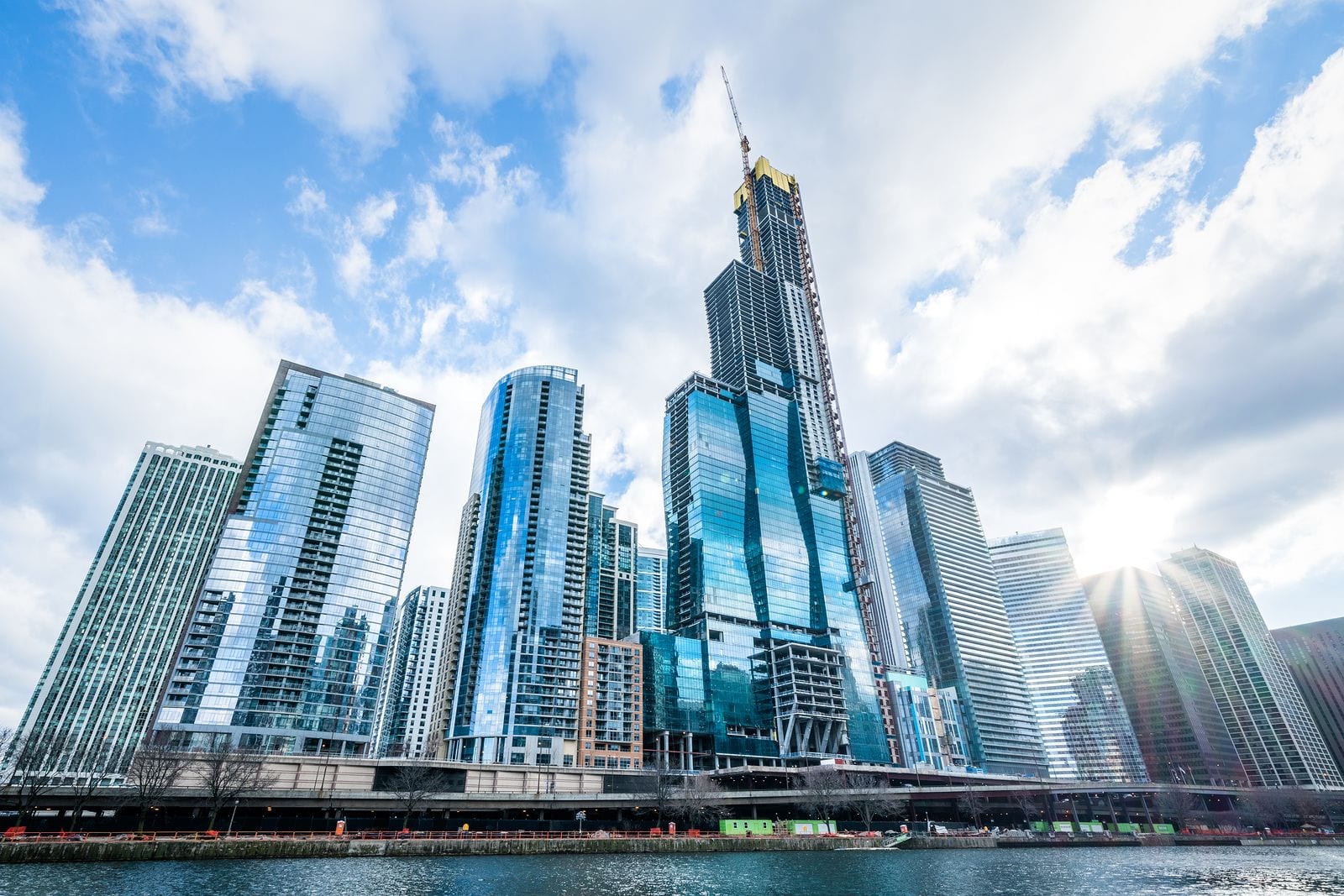Imagine having the power to shape skylines and influence economies. Commercial real estate offers you that unique opportunity.
It’s not just about buildings; it’s about creating spaces where businesses thrive and communities grow. Whether you’re a seasoned investor or just curious about the potential, commercial real estate holds exciting possibilities for you. We’ll explore how it can transform your financial landscape, spark your creativity, and empower you to leave a lasting impact.
Ready to unlock the secrets of this dynamic industry? Dive in and discover how commercial real estate can become your next big venture.
:max_bytes(150000):strip_icc()/terms_c_commercialrealestate_FINAL-fe29a809de364230bb02a9da216b5c93.jpg)
Market Trends
Commercial real estate trends show steady growth in urban areas. Demand for office spaces and retail locations is rising. Sustainable and flexible spaces are becoming a priority for developers and investors.
Commercial real estate is a dynamic field, constantly evolving with the economy, technology, and societal shifts. Understanding market trends is crucial for anyone involved in buying, selling, or investing in properties. These trends offer insights into where opportunities lie and where you might face challenges. As the world becomes more interconnected, the commercial real estate market reflects these changes in fascinating ways. Let’s dive into some current trends that are shaping the landscape.Remote Work Impact
The rise of remote work has transformed office spaces. Companies are reconsidering their need for large office areas. You might notice a shift towards flexible workspaces or shared environments. This change opens up new investment opportunities in co-working spaces, which are on the rise globally. What does this mean for traditional office real estate?Technology Integration
Technology is not just a trend; it’s a game-changer in commercial real estate. Smart buildings equipped with IoT devices are becoming the norm. These innovations enhance efficiency and sustainability. As a stakeholder, you should consider investing in tech-friendly properties. How can you leverage technology to increase a property’s value?Sustainability Focus
Sustainable practices are no longer optional. Eco-friendly buildings attract more tenants and buyers. Green certifications like LEED can increase your property’s appeal and market value. Have you evaluated the environmental impact of your properties? It’s time to think green.Urbanization Patterns
Urban areas continue to grow, creating demand for commercial spaces in cities. Yet, there’s also a trend towards suburban expansion. Understanding these patterns helps in making strategic decisions. Are you focusing on the right areas for your investments?Retail Space Evolution
Retail spaces are adapting to e-commerce growth. Malls are transforming into experiential hubs, offering more than just shopping. If you’re invested in retail properties, consider spaces that blend shopping with entertainment or dining. How can your retail properties evolve to meet consumer expectations?Investment Diversification
Diversifying your portfolio is key to managing risk. Mixed-use developments are gaining popularity, offering residential, commercial, and retail spaces in one. This trend provides stability in uncertain markets. Have you considered diversifying your investments to include mixed-use properties? By staying informed about these market trends, you position yourself to make smarter investment decisions. The commercial real estate market is full of potential, but it’s essential to adapt and innovate. What steps will you take to align with these evolving trends?
Investment Strategies
Investment strategies in commercial real estate require careful planning. They offer diverse opportunities for growth. Understanding different approaches can maximize returns. Explore how long-term and short-term investments differ. Discover the potential of value-add properties.
Long-term Vs Short-term Investments
Long-term investments focus on stability. They involve holding properties for years. Investors benefit from consistent cash flow. Appreciation in property value is key. Patience is essential. Long-term strategies suit risk-averse investors.
Short-term investments aim for quick profits. They involve buying, renovating, and selling properties fast. This strategy requires market knowledge. Timing plays a crucial role. Short-term investments suit those seeking fast returns.
Value-add Properties
Value-add properties offer growth potential. These properties need improvements. Renovations can increase their value. Investors enhance properties to boost income. This strategy requires investment in upgrades. Value-add properties offer high returns with calculated risks.
Financing Options
Commercial real estate requires significant investment. Securing the right financing is crucial. There are various options available for investors. Understanding these options helps in making informed decisions.
Traditional Loans
Banks and credit unions provide traditional loans. These loans often have fixed interest rates. They are ideal for those with good credit history. A down payment is usually required. The loan term can range from 5 to 30 years. Traditional loans offer stability and predictability. The application process can be lengthy. It requires detailed financial documentation.
Alternative Financing
Alternative financing includes options like private lenders. These can be less restrictive than banks. They offer more flexible terms. Interest rates might be higher though. Another option is crowdfunding. It allows pooling funds from many investors. Crowdfunding platforms have grown in popularity. Seller financing is also an alternative. Here, the property seller acts as the lender. This can be a quicker process.
Location Analysis
Location analysis is crucial in commercial real estate. It determines the potential success of investments. A prime location can lead to higher returns and lower risks. Investors must evaluate various factors to make informed decisions. This section explores urban vs suburban areas and emerging markets.
Urban Vs Suburban Areas
Urban areas often offer vibrant business opportunities. They have high foot traffic and public transport access. These factors attract tenants and customers alike. Urban locations typically provide robust infrastructure. This includes amenities and technological advancements.
Suburban areas differ in their appeal. They offer larger spaces at lower costs. Suburbs attract families and businesses seeking tranquility. The growth in remote work has increased suburban demand. Suburban locations often provide ample parking and green spaces.
Emerging Markets
Emerging markets present unique investment opportunities. They often show rapid economic growth and development. These markets can offer lower entry costs. Investors might benefit from early adoption in such areas.
Identifying emerging markets requires keen observation. Economic indicators and population growth are key factors. Government policies and infrastructure development play crucial roles. Investors should consider local industry growth and urbanization trends.
Property Types
Commercial real estate includes offices, retail spaces, and warehouses. These properties support businesses by providing essential space. Choosing the right type can impact productivity and growth.
Commercial real estate offers a diverse array of property types, each catering to specific business needs and investment strategies. Whether you’re an investor looking to diversify your portfolio or a business owner seeking the perfect location, understanding the different property types is crucial. Let’s delve into three main categories: office spaces, retail units, and industrial properties.Office Spaces
Office spaces are the lifeblood of many businesses. They serve as the hub for operations, collaboration, and client meetings. From sleek skyscrapers in city centers to co-working spaces in bustling neighborhoods, offices come in various shapes and sizes. Have you ever considered how the layout of an office impacts productivity? Open floor plans encourage collaboration, while private offices may boost focus. Next time you visit an office, observe how the space makes you feel. Could it influence your work habits?Retail Units
Retail units are where businesses interact directly with consumers. They range from small boutique shops to large department stores and everything in between. Location is key—think about the foot traffic and accessibility. Imagine owning a shop in a high-traffic area versus a quiet street. The difference in customer flow could be significant. Have you noticed how some shops attract more visitors than others? It often boils down to location and visibility.Industrial Properties
Industrial properties are the backbone of manufacturing, logistics, and storage. They include warehouses, factories, and distribution centers. These properties are often located in zones that accommodate large vehicles and equipment. Consider the rise of e-commerce. The demand for warehouses has surged, impacting how goods are stored and distributed. If you’re looking to invest, have you thought about the growing need for logistics hubs? How might this trend affect industrial real estate in the future? Understanding these property types can guide your decisions whether you are investing or choosing a space for your business. What type aligns with your goals? Each has its own set of benefits and challenges. Make informed choices to leverage the potential of commercial real estate.Risk Management
Commercial real estate involves managing risks effectively. Risk management is crucial for investors and property owners. It ensures long-term profitability and stability. From market fluctuations to tenant relations, understanding potential risks is key.
Market Volatility
Market volatility affects commercial real estate significantly. Prices can rise or fall unexpectedly. Economic changes impact property values. Investors need to stay informed about market trends. Monitoring economic indicators helps anticipate shifts. Preparing for downturns minimizes losses. Diversifying investments reduces exposure to volatility.
Tenant Management
Managing tenants involves more than collecting rent. Happy tenants lead to steady income. Screening tenants prevents future issues. Clear communication is essential for tenant relations. Addressing maintenance requests promptly builds trust. Lease agreements must protect owners and tenants. Handling conflicts professionally maintains peace. Understanding tenant needs enhances satisfaction.
Technology In Real Estate
Technology is dramatically reshaping the commercial real estate landscape. It’s like having a new toolkit that makes buying, selling, and managing properties more efficient. The days of paper trails and manual processes are numbered, giving way to smarter solutions.
Proptech Innovations
PropTech, short for property technology, is a game changer. It includes tools like virtual tours and smart building systems. Imagine being able to walk through a property from your couch or control building systems from your phone. These innovations not only save time but also enhance the experience for both buyers and sellers.
Then there’s the rise of automated building management. Sensors and IoT devices can monitor everything from energy use to security, offering real-time insights. This tech-driven approach helps you streamline operations and cut costs. How are you leveraging PropTech in your real estate endeavors?
Data Analytics
Data is the new gold in real estate. Analytics tools can sift through mountains of data to reveal patterns and trends. This means you can make decisions based on facts, not guesses. Imagine predicting market shifts before they happen; it’s all possible with data analytics.
These tools help you understand buyer preferences and market demands. They can even identify the best locations for new developments. It’s like having a crystal ball that gives you a competitive edge. Are you using data to drive your real estate strategies?
Technology in real estate isn’t just about gadgets; it’s about making smarter decisions. Embrace these innovations and watch your business thrive.

Sustainability Practices
Commercial real estate embraces sustainability practices to reduce energy use and promote eco-friendly designs. Green buildings attract tenants seeking lower utility costs and healthier environments. Implementing sustainable materials and technologies enhances property value and meets regulatory standards.
Sustainability practices in commercial real estate are not just trends; they are essential strategies for future-proofing investments. As the global focus shifts towards eco-friendly solutions, integrating sustainability into real estate operations is becoming crucial. These practices not only help reduce environmental impact but also enhance property value and attract eco-conscious tenants.Green Building Standards
Green building standards have reshaped the landscape of commercial real estate. Adopting standards like LEED or BREEAM can significantly boost a building’s reputation. These certifications are not just badges of honor; they offer tangible benefits like tax incentives and increased tenant demand. Imagine walking into an office building that feels alive with natural light and fresh air. That’s the impact of adhering to green standards. They ensure your properties are healthier and more appealing to modern businesses.Energy Efficiency
Energy efficiency is a cornerstone of sustainable real estate. Simple upgrades like LED lighting and smart thermostats can drastically cut energy consumption. These changes not only save money but also contribute to a cleaner environment. Have you ever wondered how much energy your building wastes daily? Addressing this can lead to significant savings. Implementing energy-efficient solutions helps you lower operational costs while boosting your property’s market appeal. Are you ready to make your property stand out through sustainability? Embrace these practices and transform your real estate investments into environmentally responsible assets. The future of commercial real estate is green, and your participation is key.Legal Considerations
Entering the world of commercial real estate involves many legal considerations. Understanding these legal aspects is crucial for success. Two key areas stand out: zoning laws and lease agreements. Both play a vital role in the commercial property landscape. Gaining insight into these can help avoid costly mistakes and ensure smoother transactions.
Zoning Laws
Zoning laws dictate how a property can be used. They ensure that spaces serve specific functions. For instance, some areas may be designated for retail, while others for industrial use. Zoning restrictions can impact business plans significantly. Knowing these laws helps in making informed decisions. Before buying, check the zoning classification of the property. Speak with local authorities to understand any restrictions. This knowledge can help prevent legal troubles down the line.
Lease Agreements
Lease agreements form the backbone of any commercial property deal. They outline the terms between landlords and tenants. These documents cover rent, duration, and responsibilities. Clarity in lease terms is crucial for both parties. Misunderstandings can lead to disputes or legal battles. Always review lease agreements carefully. Consider seeking legal advice to understand complex clauses. A well-drafted lease protects your interests and minimizes risks. Ensure it aligns with your business goals and financial plan.
Future Outlook
The commercial real estate landscape is evolving at a rapid pace, driven by technological advancements, changing consumer behaviors, and environmental considerations. As we look ahead, understanding the future outlook of this industry becomes essential for investors, developers, and businesses. What trends and opportunities can you expect to shape the commercial real estate market in the coming years?
Market Predictions
The commercial real estate market is expected to see significant shifts. Urbanization continues to influence demand, with more people moving to cities, increasing the need for office spaces and retail outlets. However, the rise of remote work has also introduced a new dynamic.
Many businesses are downsizing their physical office spaces, while others are opting for flexible, co-working environments. The emphasis on sustainability and eco-friendly buildings is another trend gaining traction. This shift not only aligns with global environmental goals but also meets tenant demands for greener spaces.
Technology, particularly in the form of smart buildings, is set to play a crucial role. Imagine a building that optimizes energy usage and provides real-time data to improve efficiency. Are you prepared to adapt to these technological changes?
Investment Opportunities
For those looking to invest, commercial real estate offers diverse opportunities. With the shift towards e-commerce, industrial properties, like warehouses and logistics centers, are in high demand. This trend is expected to continue as online shopping becomes more prevalent.
Mixed-use developments are becoming increasingly popular. These combine residential, commercial, and recreational spaces, offering convenience and community feel. Are you considering investing in a property that offers multiple functions?
The growth of secondary and tertiary cities presents another opportunity. These areas often offer more affordable investment options and are seeing growth due to urban spillover. Exploring these lesser-known markets could yield promising returns.
As you navigate the future of commercial real estate, staying informed and adaptable will be key. Are you ready to seize the opportunities that lie ahead?
Frequently Asked Questions
What Is Commercial Real Estate?
Commercial real estate involves properties used for business purposes like offices, retail, and industrial spaces. These properties generate income through leasing to businesses. It’s a vital sector in the economy, providing infrastructure for various industries and facilitating business operations.
How Does Commercial Real Estate Differ From Residential?
Commercial real estate is used for business activities, whereas residential real estate is for living spaces. The leasing terms, investment returns, and property management differ significantly. Commercial properties often involve larger investments and more complex transactions compared to residential real estate.
What Are The Types Of Commercial Real Estate?
Commercial real estate includes office spaces, retail centers, industrial facilities, and multifamily units. Each type serves different business needs and offers varied investment opportunities. Understanding these categories helps investors make informed decisions based on their goals and market trends.
Why Invest In Commercial Real Estate?
Investing in commercial real estate can provide steady income and long-term appreciation. It offers diversification from stocks and bonds. The sector often yields higher returns due to longer lease terms. Investors benefit from tax advantages and can leverage properties to expand their portfolios.
Conclusion
Exploring commercial real estate offers valuable insights. It holds great potential for growth. Investors find opportunities in diverse sectors. Offices, retail spaces, and warehouses are key options. Careful planning and research are essential. Local market trends influence decisions. Understanding regulations helps navigate challenges.
Networking with industry experts provides useful advice. Keep an eye on economic indicators. They affect property values and demand. Success requires strategic thinking and adaptability. Commercial real estate can be rewarding. It’s a journey worth considering.
Read More:
- Best Cities for Real Estate Investment: Top Picks 2025
- Real Estate Market Trends: Unlocking 2025 Insights
- Pedestrian Accident Attorney: Your Legal Advocate Today
- Housing Bubble: Uncovering the Next Big Market Shift
- Average Settlement for Personal Injury Claim: Maximize Your Payout
- Full Coverage Auto Insurance near Me: Find the Best Deals
- How to File an Auto Insurance Claim: Expert Tips
- Best Car Insurance Companies 2025: Top Picks Revealed
